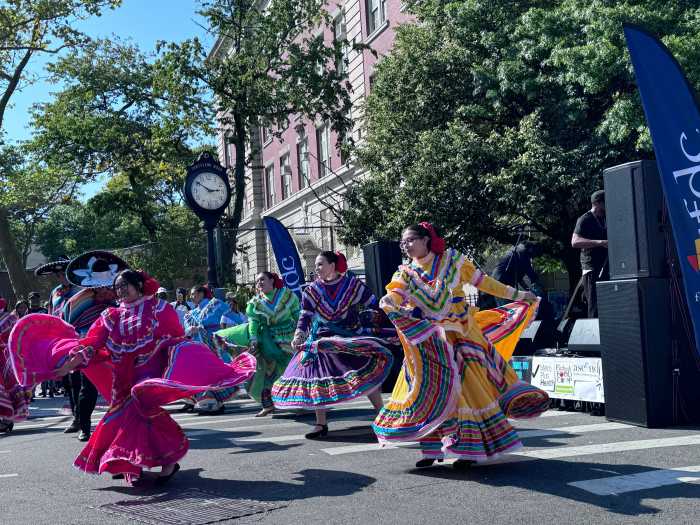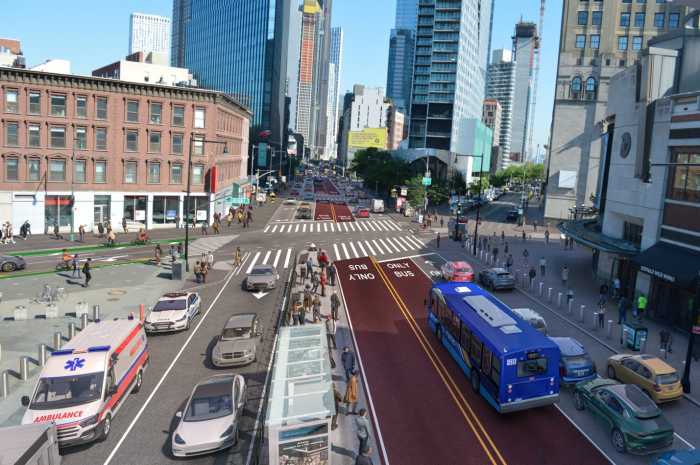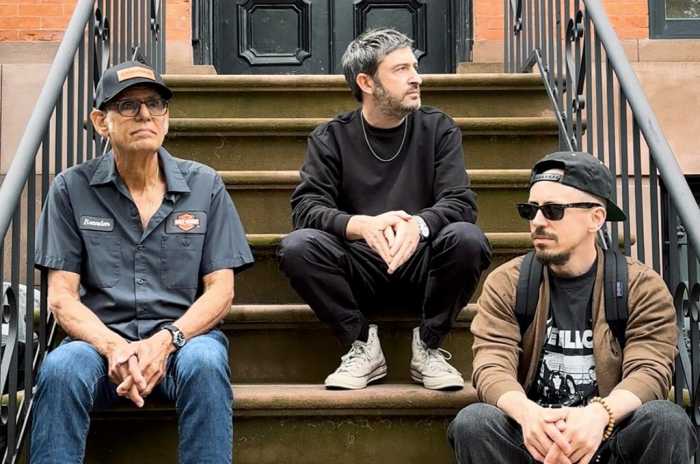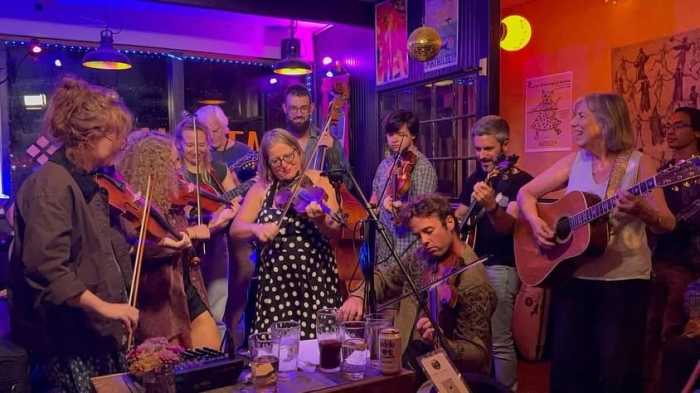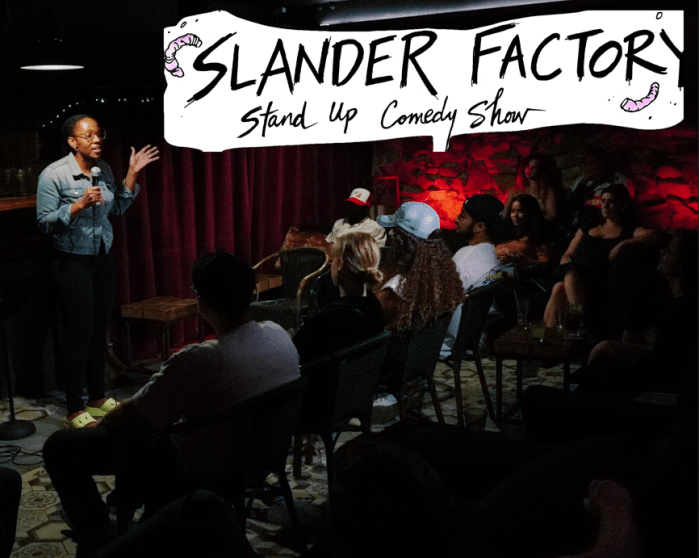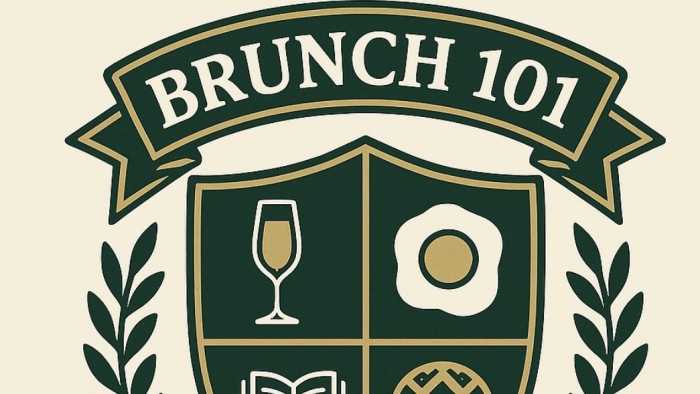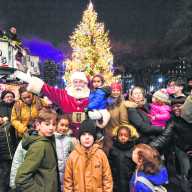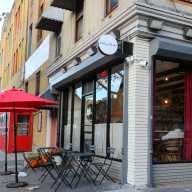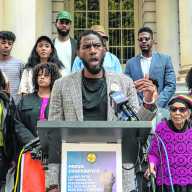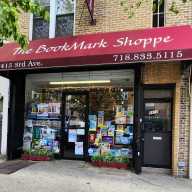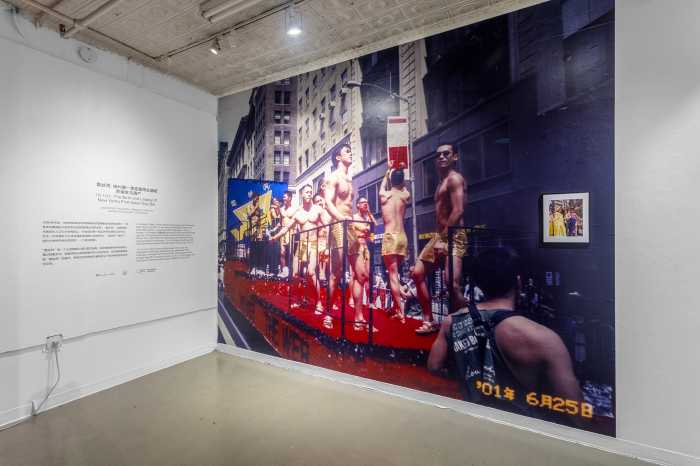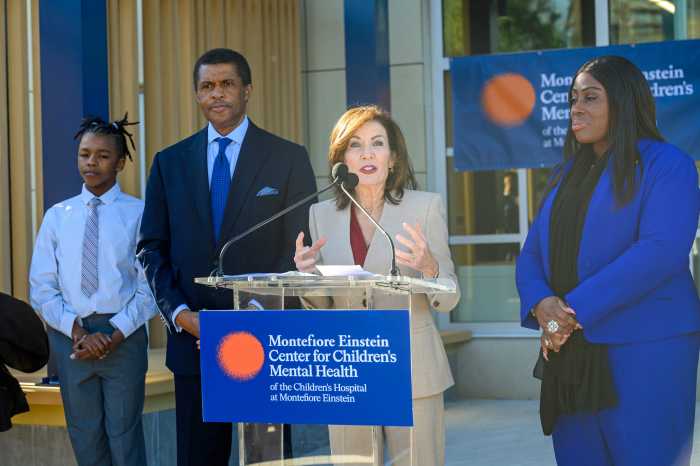Issues of environmental sustainability and affordable housing top the list of goals enunciated by Flatbush residents who participated in a several- month-long planning initiative that focused on the neighborhood.
Eve Baron, director of the Municipal Art Society’s planning center, reported on Imagine Flatbush — a project done in conjunction with the Flatbush Development Corporation (FDC) — to members of Community Board 14, gathered at the board office, 810 East 16th Street, for the May executive committee meeting.
According to Baron, the purpose of the exercise, which took place over the past fall and winter and involved individuals from many different areas of Flatbush, was to develop “a neighborhood approach to sustainability” that could work in conjunction with the citywide PlaNYC announced last year by New York City Mayor Michael Bloomberg.
“What we were trying to do was develop not a plan but a tool for planning, so we could plug into a lot of different planning initiatives,” Baron told the group.
“We started off with the assumption that sustainability is a good thing,” she went on, stressing, “We wanted to look at what community residents and businesses thought would keep the neighborhood intact.”
The project took place in a neighborhood that has been a nexus of change. Over the past several years, gentrification has increased, as have the value of homes within the Victorian enclaves.
At the same time, the neighborhood is a model of diversity with immigrants from numerous nations flocking to it. Indeed, near Cortelyou Road, is located the most diverse census tract in the entire country.
But, for all of Flatbush’s benefits – a distinctive housing stock, tremendous ethnic diversity, access to public transportation – there is a variety of challenges that must be tackled to enhance livability. For instance, the community has only a small amount of open park space, and retail venues have not necessarily kept pace with changes in the area’s residential makeup.
In addition, “People are concerned that some of the buildings in the neighborhood are not maintained to the point where people can support a healthier lifestyle,” noted Baron, who said that another theme that had emerged from the series of workshops was a strong “interest in maintaining affordability. A key issue is that tenants are concerned that some private property owners are not sufficiently maintaining their properties.”
Hand in hand with that is maintaining the ethnic and socioeconomic patchwork which distinguishes Flatbush. “There is a keen interest,” said Baron, “in preserving neighborhood diversity. One of the ways to maintain diversity is to have a diverse housing supply.”
At the same time, those who attended the workshops, said Baron, expressed a fervent interest in greening the community. To that end, she said, “People were very interested in energy efficiency. They wanted to see LEED (Leadership in Energy and Environmental Design) certification for both public and private projects.”
In addition, said Baron, workshop attendees had lamented the loss of mom and pop stores and their replacement by chains. They also had expressed a desire for more open public space where gatherings could be held, and had expressed interest in encouraging alternatives to car travel, she told the group.
While the workshops have wrapped up, the effort is ongoing, added Baron. Within a few weeks, the full report will be on line, at www.mas. org. Also, Baron said, the organization would be, “Making a presentation to the Mayor’s Office on Sustainability” about the project.
To bring goals enunciated through the project onto the table, Baron said she would like to see some of them “incorporated” into the statement of needs developed each year by CB 14.
To that end, the board – through its committees – could look into some of the issues that had been defined through Imagine Flatbush, said Alvin Berk, CB 14’s chairperson. In particular, he pointed out that a longtime board priority had been “the absence of open recreational space,” an issue that had also been given a priority in Imagine Flatbush.
Having community residents identify key issues is only the first step. They should also suggest ways of dealing with them, suggested Robin Redmond, executive director of FDC. “If FDC is creating the programs, they are not proper programs,” Redmond contended. “The community should be creating the programs.”



